GCBS’s own professors and several invited guests will deliver talks in the framework of the lecture series “Asian Buddhism: Text, Art, and Practice” (June 22-23, 2024) aimed at the GENERAL PUBLIC. Participation can be both in-person and ONLINE. For details, see below.
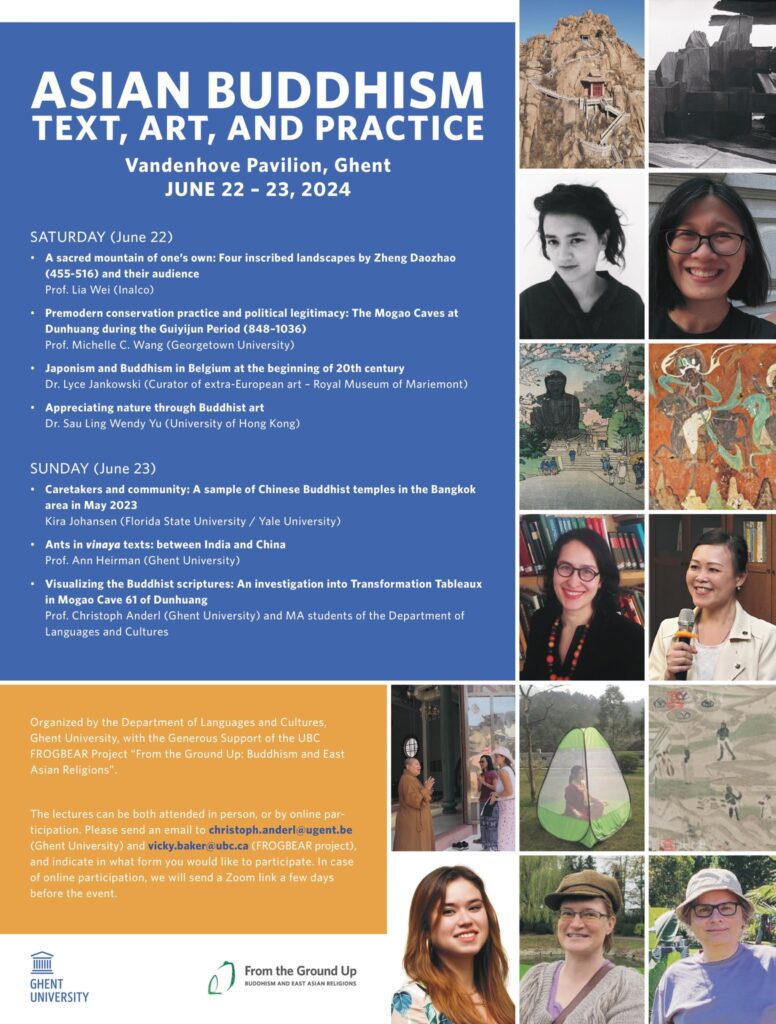
Vandenhove Pavilion, Ghent
JUNE 22 – 23, 2024
On the occasion of the Doctoral School “Chinese Buddhist Iconography and Manuscript Culture: Fieldwork Data and their Use in Pedagogical Contexts, with an Emphasis on Digital Resources”, Ghent University, a series of LECTURES FOR THE GENERAL PUBLIC is organized at the exhibition center Vandenhove Pavilion by the Department of Languages and Cultures (Ghent University), with the generous support of the FROGBEAR project “From the Ground Up: Buddhism and East Asian Religions”.
The lectures can be both attended in person, or by online participation upon registration (please register before June 20).
SCHEDULE (might be subject to changes)
SATURDAY (June 22nd, 2024)
10:00 – 11:00
A sacred mountain of one’s own: Four inscribed landscapes by Zheng Daozhao (455-516) and their audience
Prof. Lia Wei (Inalco)
This presentation travels accross four inscribed landscapes by Zheng Daozhao (455-516), analysing the means adopted and motivations invoked by 6th century local official Zheng Daozhao to mark these mountains. The peculiar form of poetic activity practiced by Zheng – engraving bare cliffs in the mountains neighbouring the urban centers where he was on duty – builds upon funerary and religious practice of the medieval period, from the carving of an epitaph to commemorate his father, to the placing and symbolic construction of Taoist altars. The posterity of the four inscribed landscapes by Zheng Daozhao seems to be limited to a few interventions by his son Zheng Shuzu (485-565), and the sites were not visited or commented upon in the following centuries, which leads one to wonder whether this highly individualized endeavour could be understood as a historical failure. Even when Zheng’s inscriptions were integrated in the history of calligraphy by the 19th century Stele School, along with other northern epigraphic monuments, his oeuvre circulated mostly in the shape of rubbings. The inscribed landscapes have not been historically valued in their own right, as spatial installations to be experienced in situ, a gap that has impacted the modern heritagization of the sites. During the voyage proposed here in Zheng’s fours mountains, we will keep these questions in mind: How and why did Zheng mark the mountain? Who was his audience – in medieval, late imperial and modern times – ?
 Lia Wei is associate professor in Chinese art history at the Institut national des langues et civilisations orientales (Inalco). She has been conducting research in China since 2009, with a focus on medieval Buddhist epigraphy and cave temples in Northeast China (Shandong, Hebei, Henan provinces) as well as funerary landscapes in Southwest China (Sichuan, Chongqing, Guizhou, Yunnan, Hubei and Hunan provinces). She received her PhD with a thesis entitled ‘Highland Routes and Frontier Communities at the Fall of the Han Empire (2nd to 3rd century CE): A Comparative Study of Cave Burials South of the Yangzi River’ at the School of Oriental and African Studies (SOAS). In 2018-2021, she was based at the Department of Archaeology and Museum Studies in Renmin University of China. In parallel to her activity as an art historian/archaeologist, she practices seal carving and ink painting, and designs projects that combine academic and artistic research (Ink Art Week in Venice 2018, Lithic Impressions Venice 2018, Ink Brussels 2019, Les cinq couleurs de l’encre 2022, Pratique de l’estampage 2023).
Lia Wei is associate professor in Chinese art history at the Institut national des langues et civilisations orientales (Inalco). She has been conducting research in China since 2009, with a focus on medieval Buddhist epigraphy and cave temples in Northeast China (Shandong, Hebei, Henan provinces) as well as funerary landscapes in Southwest China (Sichuan, Chongqing, Guizhou, Yunnan, Hubei and Hunan provinces). She received her PhD with a thesis entitled ‘Highland Routes and Frontier Communities at the Fall of the Han Empire (2nd to 3rd century CE): A Comparative Study of Cave Burials South of the Yangzi River’ at the School of Oriental and African Studies (SOAS). In 2018-2021, she was based at the Department of Archaeology and Museum Studies in Renmin University of China. In parallel to her activity as an art historian/archaeologist, she practices seal carving and ink painting, and designs projects that combine academic and artistic research (Ink Art Week in Venice 2018, Lithic Impressions Venice 2018, Ink Brussels 2019, Les cinq couleurs de l’encre 2022, Pratique de l’estampage 2023).
11:00 – 12:00
Premodern conservation practice and political legitimacy: The Mogao Caves at Dunhuang during the Guiyijun Period (848–1036)
Michelle C. Wang (Georgetown University)
My paper explores renovations to the Mogao Caves at Dunhuang carried out during the Guiyijun Period (848–1036), in particular, the construction of wooden structures attached to certain cave façades. In doing so, my aims are twofold: first, I will argue for evidence of premodern conservation practice that coincided with the aspirations of the Cao clan, who ruled Dunhuang in 914–1036, for the longevity of their rule. Second, I develop ways of thinking about the Mogao Caves from a transhistorical perspective that considers the lives and afterlives of Buddhist sites.
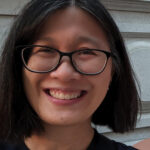 Michelle C. Wang (Department of Art and Art History, Georgetown University) is a specialist in the Buddhist and silk road art of northwestern China, primarily of the 6th-10th centuries. Her first book Maṇḍalas in the Making: The Visual Culture of Esoteric Buddhism at Dunhuang (Brill, 2018) examines Buddhist mandalas of the 8th-10th centuries at the Mogao and Yulin Buddhist cave shrines in northwestern China. She has also written about art and ritual, miracle tales of animated statues, Buddhist materiality, the transcultural reception of Buddhist motifs, and text and image. Her current research examines the reception of medieval silk road sites during the Victorian era.
Michelle C. Wang (Department of Art and Art History, Georgetown University) is a specialist in the Buddhist and silk road art of northwestern China, primarily of the 6th-10th centuries. Her first book Maṇḍalas in the Making: The Visual Culture of Esoteric Buddhism at Dunhuang (Brill, 2018) examines Buddhist mandalas of the 8th-10th centuries at the Mogao and Yulin Buddhist cave shrines in northwestern China. She has also written about art and ritual, miracle tales of animated statues, Buddhist materiality, the transcultural reception of Buddhist motifs, and text and image. Her current research examines the reception of medieval silk road sites during the Victorian era.
14:00 – 15:00
Japonism and Buddhism in Belgium at the beginning of 20th century
Dr. Lyce Jankowski (Curator of extra-European art – Royal Museum of Mariemont)
At the end of the 19th century, Emile Guimet opened a museum of history of religions – trying to fit Asian religious statuary into a global comparative approach of world religions. Three decades later, the Royal Museum of Mariemont opened its door to the public. Its founder, Raoul Warocqué (1870-1917) who bequeathed its entire estate and collection to the Belgian State in 1917, was an art collector with a taste for archaeology and Asian art among others. Buddhist art was pre-eminently displayed inside the museum but also outside. A 6 feet tall statue of an Amida Buddha as well as a thousand-armed Guanyin were placed in the park for visitors to enjoy – whereas in the museum, an Edo period Amida Buddha would sit opposite a gigantic statue of the Egyptian goddess Isis, and flanked by Indian divinities. The large collection of Buddhist artefacts acquired by Raoul Warocqué in Asia and in Europe at the turn of the century questions the meaning of these objects taken from their religious context and displayed in a private house, soon to be a museum. One need to approach them within the wider context of Japonism and question the “religious” meaning of them: some of these artefacts have been cast for export and are nothing more than collectables. The cultural appropriation of Buddhist art in Europe should also be put in perspective with positivism, which in the Belgium kingdom was linked to free-masonry. We will question the meaning of Buddhist statuary within the masonic room of the Royal Museum of Mariemont.
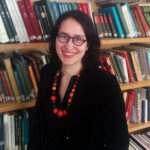 Lyce Jankowski holds a PhD (2012) in Art History from the Paris-Sorbonne University. She is curator of extra-European art at the Royal Museum of Mariemont in Belgium and was previously in charge of the East Asian coin collection at the Ashmolean Museum, Oxford. Her last publication, co-edited with Alice Bianchi, is The Social Lives of Chinese Objects (Brill 2022). Her research interest is on the history of collections and the commodification of East Asian art in Belgium in 19th and 20th century. She is currently researching the provenance of the Buddhist art collection of the Royal Museum of Mariemont.
Lyce Jankowski holds a PhD (2012) in Art History from the Paris-Sorbonne University. She is curator of extra-European art at the Royal Museum of Mariemont in Belgium and was previously in charge of the East Asian coin collection at the Ashmolean Museum, Oxford. Her last publication, co-edited with Alice Bianchi, is The Social Lives of Chinese Objects (Brill 2022). Her research interest is on the history of collections and the commodification of East Asian art in Belgium in 19th and 20th century. She is currently researching the provenance of the Buddhist art collection of the Royal Museum of Mariemont.
15:00 – 16:00
Appreciating nature through Buddhist art
Dr. Sau Ling Wendy Yu (Hong Kong University)
Buddhism holds all living things in equal regard, and thus, animals play a vital role in Buddhist scriptures. In the jātaka stories, for instance, the Buddha was reborn as different animals in his past lives, practising bodhisattva practices and accumulating merit. These stories, with their lively portrayal and profound morals, are widely loved by people. Plants are also prominently featured in Buddhist scriptures, with different sacred trees marking several essential stages in the life of the Buddha. Additionally, some animals and plants have symbolic significance in preaching the teachings of Buddhism. These narratives are typically vividly expressed through art. This lecture will lead the audience to explore the animals and plants in the Buddhist scriptures and appreciate the beauty of nature through the stories of the Buddha’s life and jātaka presented in Buddhist art. It also shares how to appreciate, respect and protect nature from a Buddhist perspective.
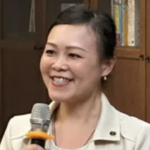 Sau Ling Wendy Yu holds a PhD in Buddhist Art from the Centre of Buddhist Studies at the University of Hong Kong. Her research focuses on exploring the aesthetic aspects of Buddhism as expressed through its art. Wendy believes that the combination of truth and beauty makes Buddhism even more compelling, and she is passionate about promoting this beauty through her research. Wendy is also an avid birdwatcher, bird artist and serves as an EXCO member of the Hong Kong Birdwatching Society. Her passion for birds extends into her research, where she specifically focuses on the bird imagery found in Buddhist art. One notable highlight of her academic journey is her thesis, which was an innovative, cross-disciplinary investigation of Pure Land birds integrating archaeological materials, textual evidence and ornithological knowledge. Birds preach the Dharma in Amitabha’s Pure Land, and Wendy acts as a bridge to share their fascinating stories with the world. Currently, Wendy works as a Research Assistant at the Centre of Buddhist Studies at the University of Hong Kong, where she is responsible for conducting research activities related to Buddhist art. Additionally, she volunteers as a docent at Tsz Shan Monastery Buddhist Art Museum and Hong Kong Palace Museum.
Sau Ling Wendy Yu holds a PhD in Buddhist Art from the Centre of Buddhist Studies at the University of Hong Kong. Her research focuses on exploring the aesthetic aspects of Buddhism as expressed through its art. Wendy believes that the combination of truth and beauty makes Buddhism even more compelling, and she is passionate about promoting this beauty through her research. Wendy is also an avid birdwatcher, bird artist and serves as an EXCO member of the Hong Kong Birdwatching Society. Her passion for birds extends into her research, where she specifically focuses on the bird imagery found in Buddhist art. One notable highlight of her academic journey is her thesis, which was an innovative, cross-disciplinary investigation of Pure Land birds integrating archaeological materials, textual evidence and ornithological knowledge. Birds preach the Dharma in Amitabha’s Pure Land, and Wendy acts as a bridge to share their fascinating stories with the world. Currently, Wendy works as a Research Assistant at the Centre of Buddhist Studies at the University of Hong Kong, where she is responsible for conducting research activities related to Buddhist art. Additionally, she volunteers as a docent at Tsz Shan Monastery Buddhist Art Museum and Hong Kong Palace Museum.
SUNDAY (June 23rd, 2024)
10:00 – 11:00
Caretakers and community: A sample of Chinese Buddhist temples in the Bangkok area in May 2023
Kira Johansen (Florida State University / Yale University)
The 2023 Cluster 3.4 Fieldwork Trip: Typologies of Text: Text-Image Relations in Bangkok, Thailand sought to explore the intersections of Buddhist cultures through the documentation of Chinese Buddhist temples throughout the Bangkok area. A topic not often touched upon in scholarship due to spatiotemporal boundaries and limitations, the Cluster 3.4 Fieldwork Trip brought to light the many nuanced levels of modern temple culture, specifically how temple caretakers play an active role in the community and the culture of the temple, and the identity of the temple itself. Many members throughout the fieldwork often defaulted to interviews with temple caretakers in an effort to glean more information about the history and communities of the temples for database input. In doing so, fieldwork participants came to discover that temple caretakers, within the scope of the fieldwork, often had an intimate relationship with the temples, sleeping in them, cleaning them, and in certain particular instances had their own special practices, like providing shows for the temple god to watch, as an example. Furthermore, temple caretakers managed intricate donor systems, and maintained donor information. In many of the temples, these donors were highlighted in inscriptions, and on seasonal materials (e.g. Chinese New Year laterns). This proposal seeks to expound upon the roles of temple caretakers as uncovered during the 2023 Cluster 3.4 Fieldwork Trip in Bangkok, Thailand and specifically aims to identify ways in which temple caretakers encountered on the fieldwork are bastions of their respective temple histories and practices, and explores their specific and intimate relationship with the temples themselves.
 Kira Johansen is a recent graduate of Florida State University with a Bachelor’s Degree in International Affairs and a concentration in Religion and French. Following her graduation from Florida State University in August of 2023, Johansen has been accepted and matriculated at Yale University as a Master’s candidate in East Asian Studies starting in the Fall of 2024. Johansen’s primary research focuses on translation and interpretation of the Biographies of Nuns, although she more broadly focused on medieval Chinese Buddhism, and Buddhist nuns. Recently, Johansen has been heavily involved in the University of British Columbia’s From the Ground Up: Buddhist and East Asian Studies (FROGBEAR) Cluster 3.4 Project: “Typologies of Text-Image Relations” as a fieldwork participant and metadata creator for Chinese temples in Bangkok, Thailand. She hopes to incorporate the fruits of this research into a larger research project in the future connecting Chinese diasporas and religiosity to the Thai religious landscape. Along with Christoph Anderl, Johansen is aiding in the compilation of an exhibition on Buddha’s life at the Mariemont Museum (September 2024 – April 2025).
Kira Johansen is a recent graduate of Florida State University with a Bachelor’s Degree in International Affairs and a concentration in Religion and French. Following her graduation from Florida State University in August of 2023, Johansen has been accepted and matriculated at Yale University as a Master’s candidate in East Asian Studies starting in the Fall of 2024. Johansen’s primary research focuses on translation and interpretation of the Biographies of Nuns, although she more broadly focused on medieval Chinese Buddhism, and Buddhist nuns. Recently, Johansen has been heavily involved in the University of British Columbia’s From the Ground Up: Buddhist and East Asian Studies (FROGBEAR) Cluster 3.4 Project: “Typologies of Text-Image Relations” as a fieldwork participant and metadata creator for Chinese temples in Bangkok, Thailand. She hopes to incorporate the fruits of this research into a larger research project in the future connecting Chinese diasporas and religiosity to the Thai religious landscape. Along with Christoph Anderl, Johansen is aiding in the compilation of an exhibition on Buddha’s life at the Mariemont Museum (September 2024 – April 2025).
11:00 – 12:00
Ants in vinaya texts: between India and China
Prof. Ann Heirman (Ghent University)
Buddhist texts generally prohibit the killing or harming of sentient beings. This is certainly the case in vinaya (disciplinary) texts, which contain strict guidelines on the preservation of all animal life. When these texts were translated into Chinese, they formed the core of Buddhist behavioural codes, and medieval Chinese vinaya masters, such as Daoxuan (596–667), wrote extensive commentaries on them, introducing Indian concepts into the Chinese environment. But do these authors have anything to say about tiny creatures that are highly visible yet often neglected: ants?
Humans tend to consider ants as unwelcome pests, and as such frequently try to eliminate them. Yet, they are undoubtedly sentient beings that – according to Buddhist principles – should not be harmed or killed. In that sense, their actions affect human activities, pushing people to react.
This lecture explores what this complex relationship between ants and humanity implies for Buddhist monastics. First, it examines the Indian vinayas’ guidance on the subject of these crawling insects. In which contexts do they appear, and how do monastics perceive them? Second, it investigates how Chinese masters interpreted the guidelines contained within the Indian texts. How do they suggest devout Buddhists should deal with ants? How do they translate the Indian concepts, both linguistically and culturally, for their Chinese audiences? And which of Buddhism’s basic principles do they hold in the highest esteem?
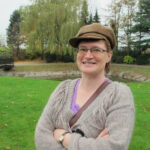 Ann Heirman, Ph.D. (1998) in Oriental Languages and Cultures, is full professor of Chinese Language and Culture and head of the Centre for Buddhist Studies at Ghent University in Belgium. She has published extensively on Chinese Buddhist monasticism and the development of disciplinary rules, including Rules for Nuns according to the Dharmaguptakavinaya (Motilal Banarsidass, 2002), The Spread of Buddhism (Brill, edited volume with Stephan Peter Bumbacher, 2007), A Pure Mind in a Clean Body (with Mathieu Torck, Academia Press, 2012), and Buddhist Encounters and Identities Across East Asia (Brill, edited volume with Carmen Meinert and Christoph Anderl, 2018).
Ann Heirman, Ph.D. (1998) in Oriental Languages and Cultures, is full professor of Chinese Language and Culture and head of the Centre for Buddhist Studies at Ghent University in Belgium. She has published extensively on Chinese Buddhist monasticism and the development of disciplinary rules, including Rules for Nuns according to the Dharmaguptakavinaya (Motilal Banarsidass, 2002), The Spread of Buddhism (Brill, edited volume with Stephan Peter Bumbacher, 2007), A Pure Mind in a Clean Body (with Mathieu Torck, Academia Press, 2012), and Buddhist Encounters and Identities Across East Asia (Brill, edited volume with Carmen Meinert and Christoph Anderl, 2018).
14:00 – 16:00
Visualizing the Buddhist scriptures: An investigation into Transformation Tableaux in Mogao Cave 61 of Dunhuang
Prof. Christoph Anderl (Ghent University) and MA students of the Department of Languages and Cultures
In this lecture, MA students of the course “Buddhism: Text and Material Culture” at the Department of Languages and Cultures, Ghent University will present results of this term’s research topic, a selection of Transformation Tableaux in the 10th century Mogao Cave 61 of the oasis town of Dunhuang. Transformation Tableaux refer to large-scale visualizations of important Buddhist Mahāyāna sūtras, projected on the walls of Buddhist cave temples in Medieval China. This presentation is the result of group work, based on the collaborative effort of Belgian and Chinese MA students. It is the outcome of our research-oriented approach which aims to produce results which become visible “beyond the classroom”, either in the form of journal papers, entries in scholarly databases, or presentations for the general public.
Organizer
Christoph Anderl (Ghent University)
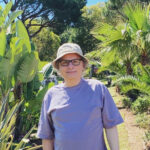 Christoph Anderl specializes on medieval Chinese manuscript culture, Buddhist Chinese, and various topics related to the development and adaptation of Chinese Buddhism during the Tang and Five Dynasties periods. During the last years, his focus has been on the study of modes of representation of Buddhist narratives in textual and visual media, including methodological and theoretical issues concerning the interrelation of text and image. In this context, he has also acted as leader of the Research Cluster “Typologies of Text-Image Relations” in the large UBC-based interdisciplinary project “From the Ground Up: Buddhism and East Asian Religions”, with ca. 30 participating universities. In order to study text-image relations and modes of representations in specific contexts, he has organized several conferences/seminars, as well as conducted fieldwork in China and Bangkok, leading groups of participants from international universities. Anderl is also the editor-in-chief of a database of non-canonical Dunhuang texts and character variants found in Dunhuang texts and other materials of the medieval period, a long-term project conducted in collaboration with Asian and European universities. For current projects, see Professor Anderl’s profile at the research portal of the Ghent Centre for Buddhist Studies.
Christoph Anderl specializes on medieval Chinese manuscript culture, Buddhist Chinese, and various topics related to the development and adaptation of Chinese Buddhism during the Tang and Five Dynasties periods. During the last years, his focus has been on the study of modes of representation of Buddhist narratives in textual and visual media, including methodological and theoretical issues concerning the interrelation of text and image. In this context, he has also acted as leader of the Research Cluster “Typologies of Text-Image Relations” in the large UBC-based interdisciplinary project “From the Ground Up: Buddhism and East Asian Religions”, with ca. 30 participating universities. In order to study text-image relations and modes of representations in specific contexts, he has organized several conferences/seminars, as well as conducted fieldwork in China and Bangkok, leading groups of participants from international universities. Anderl is also the editor-in-chief of a database of non-canonical Dunhuang texts and character variants found in Dunhuang texts and other materials of the medieval period, a long-term project conducted in collaboration with Asian and European universities. For current projects, see Professor Anderl’s profile at the research portal of the Ghent Centre for Buddhist Studies.